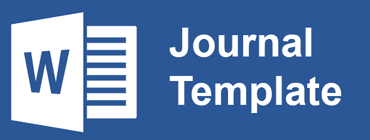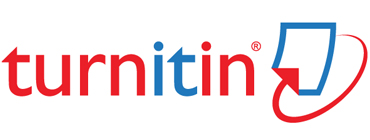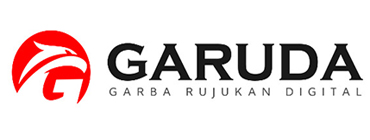MENGKAJI KEUNGGULAN KURIKULUM IPA FINLANDIA UNTUK MENINGKATKAN PENDIDIKAN SAINS DI INDONESIA
Abstract
The issues in education in Indonesia, particularly in the field of Natural Sciences, are very concerning. According to the Programme for International Student Assessment (PISA) survey by the OECD, Indonesian students' abilities in science rank low globally, with a ranking of 71 out of 77 countries in 2018 and 68 out of 81 countries in 2023. The science scores also declined from 396 to 383, far below the RPJMN target of 402. Data from the Trends in International Mathematics and Science Study (TIMSS) shows that Indonesian 4th and 8th-grade students also rank low internationally. The research methodology uses a qualitative approach through a literature study. Data analysis indicates that the content and competency-based science curriculum in Finland provides a good model by integrating theoretical knowledge and practical skills. Science education in Finland, which is interactive and student-centered, can serve as a reference for improving the curriculum in Indonesia. A comprehensive and context-based science learning approach is needed to enhance the quality of science education in Indonesia. The PISA and TIMSS survey results emphasize the need for improvements in science learning in Indonesia. Science, as systematic knowledge and a scientific process, requires a holistic and integrated learning approach. An integrated science approach that connects science to everyday life is crucial for developing scientific processes in students. Science teachers are expected to have interdisciplinary abilities and knowledge integration. However, often the curriculum and the quality of teachers do not support this goal. This study compares the 2013 Curriculum in Indonesia with the Finnish Curriculum to see the similarities, differences, and obstacles in science learning.
Full Text:
PDFReferences
Alindra, Afridha Laily, Ashtiyani Kholida, Nevi Septiani, and Reina Farhanah. “Analisis Penerapan Metode Pendidikan Finlandia Di SD Plus Mutiara Insani.” Jurnal Pendidikan Tambusai 7, no. 3 (2023): 29786–29791.
Annala, Johanna. “What Knowledge Counts — Boundaries Of Knowledge In Cross ‑ Institutional Curricula In Higher Education.” Higher Education 85, no. 6 (2023): 1299–1315. https://doi.org/10.1007/s10734-022-00891-z.
Astuti, Tri Pudji. “Model Problem Based Learning Dengan Mind Mapping Dalam Pembelajaran IPA Abad 21.” Proceeding of Biology Education 3, no. 1 (2019): 64–73.
Epria, Irdhan, Darma Putra, Azwar Ananda, and Nurhizrah Gistituati. “Perbandingan Kurikulum Pendidikan Indonesia Dan Finlandia.” Journal on Education 06, no. 01 (2023): 7436–7448.
Handono, Dwi, Ana Fitrotun Nisa, and Yuli Prihatni. “Penerapan Metode Pembelajaran Berbasis Proyek Dalam Pembelajaran IPA Di Sekolah Dasar Dwi.” E D U K A S I Jurnal Penelitian & Artikel Pendidikan 15, no. 02 (2023): 263–278.
Iriansyah, Herianto Sidik. “Membangun Kreativitas Guru Dengan Inovasi Pembelajaran.” Prosiding Seminar Nasional Pendidikan STKIP Kusuma Negara II, no. 1 (2020): 1–6.
Jons, Lotta, and John Airey. “An Agreed Figured World – Conceptualizing Good Physics Teachers in a Finnish University An Agreed Figured World – Conceptualizing Good Physics Teachers in a Finnish University.” Journal of Science Teacher Education 35, no. 1 (2024): 5–23. https://doi.org/10.1080/1046560X.2023.2169654.
Kusumaningrum, Diana. “LITERASI LINGKUNGAN DALAM KURIKULUM 2013 DAN PEMBELAJARAN IPA DI SD.” Indonesian Journal of Natural Science Education (IJNSE) 01, no. 02 (2018): 57–64.
Montés, Nicolás, Alberto Zapatera, Francisco Ruiz, Laura Zuccato, Sandra Rainero, Amerigo Zanetti, Ketty Gallon, Gabriel Pacheco, Anna Mancuso, and Alesandros Kofteros. “A Novel Methodology to Develop STEAM Projects According to National Curricula.” Education Sciences 13, no. 169 (2023): 1–22.
Muryanti, Elise, and Yuli Herman. “Studi Perbandingan Sistem Pendidikan Dasar Di Indonesia Dan Finlandia.” Jurnal Obsesi : Jurnal Pendidikan Anak Usia Dini 6, no. 2 (2022): 1146–1156.
Pratiwi, S N, C Cari, and N S Aminah. “Pembelajaran IPA Abad 21 Dengan Literasi Sains Siswa.” Jurnal Materi dan Pembelajaran Fisika (JMPF) 9, no. 1 (2019): 34–42.
Rajwa, Jihan, Nova Alviyani, Fara Erlinda Putri, S Si, Jurusan Gizi, Fakultas Kedokteran, Universitas Muhammadiyah, et al. “Pembelajaran Materi IPA & Edukasi Pada Siswa / i Di SDIT An-Nuriyah Jakarta.” Prosiding Seminar Nasional LPPM UMJ, no. Oktober (2023): 1–7.
Sahlberg, Pasi, and Pasi Sahlberg. “Education Policies for Raising Student Learning : The Finnish Approach Education Policies for Raising Student Learning : The Finnish Approach.” Journal of Education Policy 0939, no. October (2017).
Sugiyono. Metode Penelitian Kuantitatif Kualitatif Dan R&D. Bandung: Alfabeta, 2007.
———. Metode Penelitian Pendidikan(Pendekatan Kuantitatif, Kualitatif Dan R&D). Bandung: Alfabeta, 2010.
Sulthon. “Pembelajaran Ipa Yang Efektif Dan Menyenangkan Bagi Siswa Madrasah Ibtidaiyah (MI).” Elementary 4, no. 1 (2016): 38–54.
Tahirsylaj, Armend. “Nordic Journal of Comparative and International Education ( NJCIE ).” Nordic Journal of Comparative and International Education (NJCIE) 4, no. 2 (2020): 3–24.
Tirri, Kirsi, and Martin Ubani. “Education of Finnish Student Teachers for Purposeful Teaching.” Journal of Education for Teaching: International research and pedagogy 39, no. December (2013): 21–29.
Wang, Yan. “Aims for Learning 21st Century Competencies in National Primary Science Curricula in China and Finland.” EURASIA Journal of Mathematics, Science and Technology Education 14, no. 6 (2018): 2081–2095.
Westbury, Ian, Sven Erik Hansén, and Pertti Kansanen. “Teacher Education for Research ‐ Based Practice in Expanded Roles : Finland ’ s Experience.” Scandinavian Journal of Educational Research 49, no. September 2014 (2005): 475–485.
Wicaksono, Grahito, and Ika Candra Sayekti. “Bagaimana Perbandingan Kurikulum 2013 Dengan Kurikulum Australia Pada Mata Pelajaran IPA ?” Natural: Jurnal Ilmiah Pendidikan IPA 7, no. 1 (2020): 21–29.
DOI: http://dx.doi.org/10.30821/niz.v14i1.3551
Refbacks
- There are currently no refbacks.







